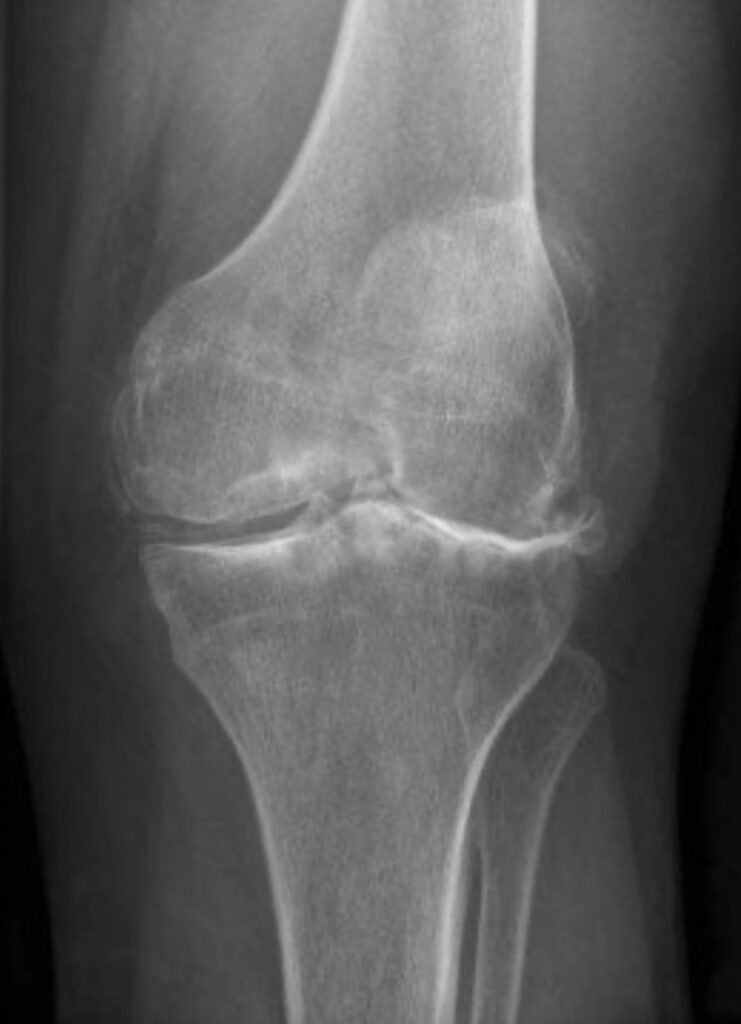If you are living with knee osteoarthritis, it’s important to understand that this disease is progressive. And, as the disease advances, symptoms will worsen and mobility in your joints may be compromised. But what are the stages of knee osteoarthritis? And how can you find relief from painful symptoms? Here’s what you need to know!

Knee osteoarthritis is a disease that can affect your joint function and mobility. As we mentioned above, the disease is progressive and has no cure. However, there are stages of disease. And if you intervene before mobility is compromised, you may be able to stay active and delay or prevent further progression.
If you show no symptoms of knee osteoarthritis, and there is no evidence of joint damage, your disease is classified as Stage 0. At this point, no treatment or intervention is recommended.
At this stage, your knee joints may show minor signs of wear and tear. You may also have slight growths of bone spurs on your joints, but you’re unlikely to experience pain. Still, if you have risk factors for arthritis, engaging in exercises for knee health could help prevent progression into stage two.
Here, we will notice more signs of bone spur growth when we x-ray your knee joints. Typically, the spaces between your joints will still appear normal, however, patients with stage 2 knee osteoarthritis are likely to experience symptoms such as joint pain and stiffness, especially after exercising, sitting for extended periods, or when you first wake up in the morning. Stage 2 patients may also start to experience cartilage break down. For some patients, progression and pain may be managed with lifestyle measures, including wearing braces or supports and focusing on strength training and exercise. However, some people will need additional interventions to find relief.
At this point, we will detect obvious cartilage erosion between your bones; the gap between bones will also have narrowed. At this point, inflammation in your joints will leave you experiencing frequent pain and stiffness. You may also notice that your knee makes a popping noise when you walk. Some stage 3 patients can manage their pain with medications. But, again, additional interventions may be necessary.
This is a severe stage of knee osteoarthritis—at this point of disease progression, your joint will be stiff because the cartilage has worn down significantly, leaving very little space between bones. Your synovial fluid that lines your knee joint will also decrease, so that you experience pain and friction when you try to move your joint. At stage 4, doing something as simple as trying to walk down the stairs could cause excruciating pain. As such, patients who reach this stage of disease progression are often forced to seek surgical treatments in order to relieve their discomfort. However, if you choose to seek help for knee osteoarthritis when you are still in stage two or three, the experts at the Texas Knee Institute can help relieve your pain with a non-surgical medical procedure.
Genicular artery embolization (GAE) is a non-surgical procedure that can slow knee osteoarthritis progression. Recommended for stage 2 and 3 osteoarthritis patients who have not found relief from other, non-surgical interventions, it diminishes blood flow to the lining of your knee, reducing pain, inflammation and other symptoms. After undergoing GAE, you should be able to walk within two to three hours. Most patients will return to normal activities the day after the procedure, with symptom reduction becoming apparent within weeks of the procedure.
Ready to find relief for your arthritis symptoms, without the need for surgery? We’re here to help. Click here to request an appointment Click here to request an appointment Click here to request an appointment at the Texas Knee Institute.

Scheduling
Please contact our dedicated specialists to schedule a consultation today.
2025 Texas Knee Institute. All rights reserved. Website Design by Healthcare Success